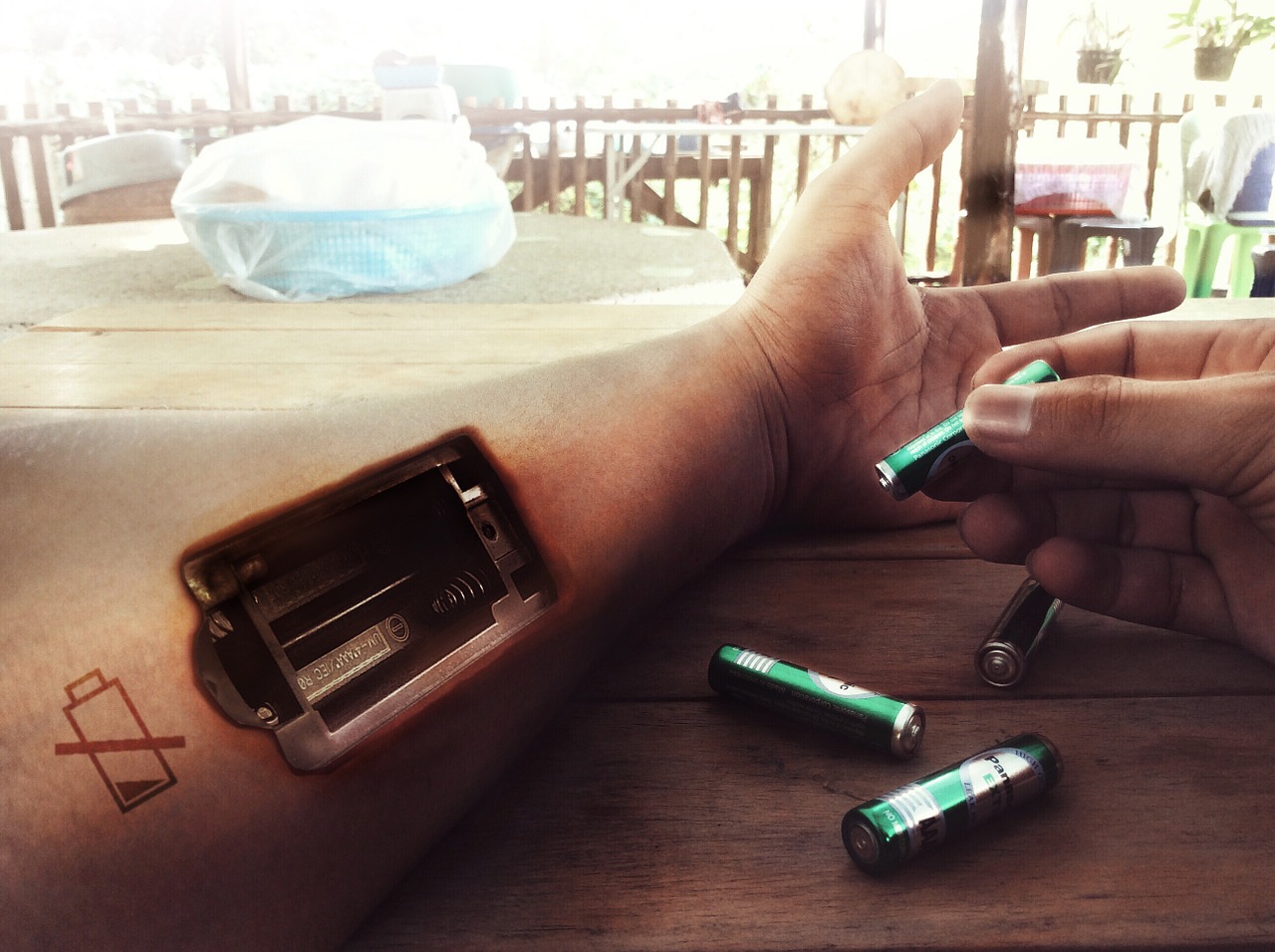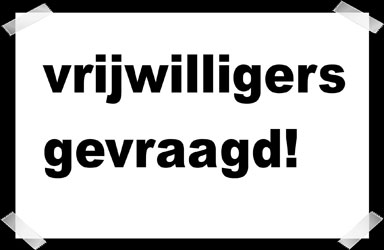
PEM (ook wel PENE, “opflakkering” of “crash”) is een ernstig invaliderend symptoom, veroorzaakt door inspanning — Mark Guthridge, Twitter
https://twitter.com/Dr_M_Guthridge/status/1094170151740731393
Dr Mark Guthridge on Twitter
18 myths & misconceptions of Post-Exertional Malaise #PEM in Myalgic Encephalomyelitis/Chronic Fatigue Syndrome #MECFS #PEM (aka PENE, “flare” or “crash”) is seriously debilitating symptom caused by exercise #SickNotWeak #SickNotTired #pwME #chronicillness #medtwitter #MedEd
1. PEM is gewoon vermoeidheid
FOUT
ME-patiënten ervaren na inspanning <pathologische> vermoeidheid, die langdurig kan zijn en zich uit in invaliderende vermoeidheid, griepachtige symptomen, cognitieve beperkingen, slaapstoornissen. https://www.pnas.org/content/114/6/E911
Reply to Roerink et al.: Metabolomics of chronic fatigue syndrome
We thank Roerink et al. (1) for their comments. We respond to their two points in order. Their first point asked about the effect of physical activity on sphingolipids. The sphingolipid response to exercise is complex.
2. PEM is niet echt
FOUT
“Er bestaat geen medische aandoening waarbij inspanning immuun- en inflammatiegerelateerde symptomen veroorzaakt, zoals keelpijn, gevoelige lymfeknopen of griepachtig gevoel, en toch rapporteerde 60% van de ME-patiënten dit soort symptomen.”
https://journals.plos.org/plosone/article?id=10.1371/journal.pone.0197811
Deconstructing post-exertional malaise in myalgic encephalomyelitis/ chronic fatigue syndrome: A patient-centered, cross-sectional survey
Background Post-exertional malaise (PEM) is considered to be the hallmark characteristic of myalgic encephalomyelitis/ chronic fatigue syndrome (ME/CFS). Yet, patients have rarely been asked in formal studies to describe their experience of PEM.
3. Sommige diagnostische criteria voor ME/CVS vereisen zelfs geen PEM, dus dan zal het toch niet zo belangrijk zijn.
FOUT
De Criteria van Oxford en Fukuda vereisten geen PEM, en dat is deels de reden waarom de NIH wil dat dit soort definities worden “ingetrokken”.
Pathways to Prevention Workshop | Annals of Internal Medicine | American College of Physicians
Speakers: Niloofar Afari, PhD (Associate Professor, University of California, San Diego, Healthcare System; Director of Clinical Research, Veterans Affairs Center of Excellence for Stress and Mental Health; and Division Co-Director, Mental Health Integrative and Consultative Services, Veterans Affairs San Diego Healthcare System, La Jolla, California); James M.
4. ME/CVS en PEM zijn psychologisch
FOUT
De standpuntnota over ME/CVS van NIH stelt dat ME-patiënten vaak geconfronteerd worden met scepticisme, onzekerheid en terughoudendheid, en dat men beweert dat ze gedeconditioneerd zijn of een primaire psychologische stoornis hebben. ”
5. PEM is simpelweg wat er gebeurt wanneer sedentaire ME/cvs-patiënten sporten
FOUT
Deze studies in PLoS One tonen aan dat inspanning een aanhoudende, immuungerelateerde, inflammatoire handtekening uitlokt bij ME-patiënten die anders is dan die van sedentaire personen.
https://journals.plos.org/plosone/article?id=10.1371/journal.pone.0197811
6. ME/CVS-patiënten catastroferen gewoon over inspanning
FOUT
Tijdens een tweedaagse CPET-inspanningstest, toonden ME-patiënten beduidend lagere waarden voor O2-consumptie op dag 2, wat overeenkomt met een door inspanning veroorzaakte, verstoorde aerobische capaciteit en PEM.
https://www.tandfonline.com/doi/abs/10.1300/J092v14n02_07
7. ME/CVS-patiënten zijn gedeconditioneerd
FOUT
Deze inspanningsstudies tonen bij ME-patiënten een “verhoogde afhankelijkheid van glycolytisch metabolisme en verhoogd melkzuur [dus] inspanningsintensiteit kan niet aangehouden worden, wat resulteert in verminderde activiteit.”
https://academic.oup.com/ptj/article/93/11/1484/2735315
Discriminative Validity of Metabolic and Workload Measurements for Identifying People With Chronic Fatigue Syndrome
Reduced functional capacity and postexertion fatigue after physical activity are hallmark symptoms of chronic fatigue syndrome (CFS) and may even qualify for biomarker status. That these symptoms are often delayed may explain the equivocal results for clinical cardiopulmonary exercise testing in people with CFS. Test reproducibility in people who are healthy is well documented.
8. Het is onmogelijk om PEM te krijgen van gewoon douchen of koken
FOUT
Bij ME-patiënten met verstoord aerobisch metabolisme, leidt de nood aan “anaerobe energie” voor zelfs de normaalste dagelijkse activiteiten tot de symptoomverergering die men ziet bij PEM.
https://academic.oup.com/ptj/article/93/11/1484/2735315
9. ME/CVS-patiënten zijn aanstellers die PEM faken
FOUT
“Kinesisten/Fysiotherapeuten zouden moeten beseffen dat de postexertionele toestand van ME-patiënten gekenmerkt wordt door meetbare tekorten in metabolisme en werklast die zo goed als onmogelijk te vervalsen zijn.”
https://academic.oup.com/ptj/article/93/11/1484/2735315
10. Mijn dokter beweert dat GET zorgt voor herstel als ik door mijn PEM heen duw.
FOUT
“Aerobe energieprocessen reageren niet normaal op inspanning bij ME-patiënten [dus] onvoorzichtig toegepaste GET zal vaak leiden tot verergering van symptomen.”
https://translational-medicine.biomedcentral.com/articles/10.1186/1479-5876-12-104
Inability of myalgic encephalomyelitis/chronic fatigue syndrome patients to reproduce VO 2 peak indicates functional impairment
Myalgic Encephalomyelitis/Chronic Fatigue Syndrome (ME/CFS) is a multi-system illness characterized, in part, by increased fatigue following minimal exertion, cognitive impairment, poor recovery to physical and other stressors, in addition to other symptoms. Unlike healthy subjects and other diseased populations who reproduce objective physiological measures during repeat cardiopulmonary exercise tests (CPETs), ME/CFS patients have been reported to fail to reproduce results in a second CPET performed one day after an initial CPET.
11. Er is geen objectieve manier om PEM te meten.
FOUT
Studies van BioMedCentral vonden een significante daling in de maximale O 2-pols na inspanning, wat wijst op verstoorde O2 -toevoer bij ME/CVS-patiënten nadat de postexertionele malaise is ingezet.”
https://translational-medicine.biomedcentral.com/articles/10.1186/1479-5876-12-104
12. Er is geen wetenschappelijke grond voor PEM
FOUT
“Nadat PEM is ingezet, verlaagt de drempel waarop het anaerobe metabolisme versnelt bij ME/CVS [wat leidt tot] voortijdige anaerobiose in ME-patiënten, waardoor hun arbeidsgeschiktheid nog lager wordt.”
https://translational-medicine.biomedcentral.com/articles/10.1186/1479-5876-12-104
13. Sporten is goed voor vele ziektes, waaronder ME/CVS
FOUT
“ME-patiënten vormen op dit moment een unieke categorie van patiënten die geen maximale CPET-[oefening] kunnen herhalen, in tegenstelling [tot] cardiovasculaire-, long-, nier- en pulmonaire ziektes.”
https://translational-medicine.biomedcentral.com/articles/10.1186/1479-5876-12-104
14. Klinische studies over GET voor ME/CVS meldden geen nevenwerkingen of PEM.
FOUT
“De meeste studies spreken zich niet uit over nevenwerkingen. Dit zou de reden kunnen zijn waarom vele ME-patiënten buiten klinische studies verslechtering melden door GET.”
https://journals.sagepub.com/doi/10.1177/2055102918805187
Graded exercise therapy for myalgic encephalomyelitis/chronic fatigue syndrome is not effective and unsafe. Re-analysis of a Cochrane review – Mark Vink, Alexandra Vink-Niese, 2018
The analysis of the 2017 Cochrane review reveals flaws, which means that contrary to its findings, there is no evidence that graded exercise therapy is effective. Because of the failure to report harms adequately in the trials covered by the review, it cannot be said that graded exercise therapy is safe.
15. PEM-symptomen zijn vaag en niet diagnostisch
FOUT
“Via een binair regressiemodel waren slechts 4 postexertionele symptomen nodig (symptomen gerelateerd aan vermoeidheid, immuniteit, slaap en pijn) om 92% van ME/CVS correct te classificeren.”
https://journals.plos.org/plosone/article?id=10.1371/journal.pone.0197811
16. ME-patiënten willen gewoon niet sporten, het heeft niets te maken met PEM.
FOUT
“Op basis van de zuurstofopname was de recuperatie van ME-patiënten na 24 uur niet voltooid. Dit wijst op een verstoord herstel [veroorzaakt door] postexertionele malaise.”
https://translational-medicine.biomedcentral.com/articles/10.1186/1479-5876-8-93
Patients with chronic fatigue syndrome performed worse than controls in a controlled repeated exercise study despite a normal oxidative phosphorylation capacity
The aim of this study was to investigate the possibility that a decreased mitochondrial ATP synthesis causes muscular and mental fatigue and plays a role in the pathophysiology of the chronic fatigue syndrome (CFS/ME). Female patients (n = 15) and controls (n = 15) performed a cardiopulmonary exercise test (CPET) by cycling at a continuously increased work rate till maximal exertion.
17. Hersenfunctie bij ME/CVS kan niet aangetast worden door PEM.
FOUT
“Inspanning verstoorde de cognitieve prestatie en tastte de hersenfunctie van ME-patiënten aan wat objectief bewijs [verschaft] van de schadelijke neurofysiologische effecten van postexertionele malaise.”
https://www.sciencedirect.com/science/article/pii/S088915911730051X
Neural consequences of post-exertion malaise in Myalgic Encephalomyelitis/Chronic Fatigue Syndrome
JavaScript is disabled on your browser. Please enable JavaScript to use all the features on this page. * Acute exercise affects symptoms, cognitive performance and brain function in ME/CFS. * Symptom provocation by exercise is a useful model to study post-exertion malaise. * Objective neurophysiological evidence of the phenomenon of post-exertion malaise.
18. Fysieke deconditionering draagt bij aan de instandhouding van fysieke invaliditeit bij ME/CVS.
FOUT
Deze studies vonden dat “de waarde van de verhoging in cardiale output relatief aan de zuurstofopname losstaat van motivatie of deconditionering.”
https://translational-medicine.biomedcentral.com/articles/10.1186/1479-5876-12-20
Decreased oxygen extraction during cardiopulmonary exercise test in patients with chronic fatigue syndrome
The insufficient metabolic adaptation to exercise in Chronic Fatigue Syndrome (CFS) is still being debated and poorly understood. We analysed the cardiopulmonary exercise tests of CFS patients, idiopathic chronic fatigue (CFI) patients and healthy visitors. Continuous non-invasive measurement of the cardiac output by Nexfin® (BMEYE B.V.
© Twitter Mark Guthridge. Vertaling Abby, redactie Zuiderzon, ME-gids.






